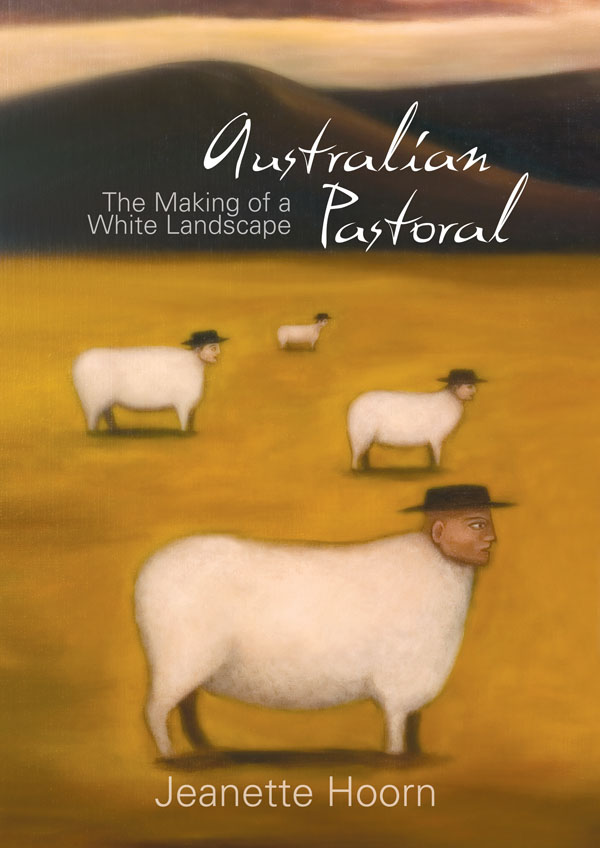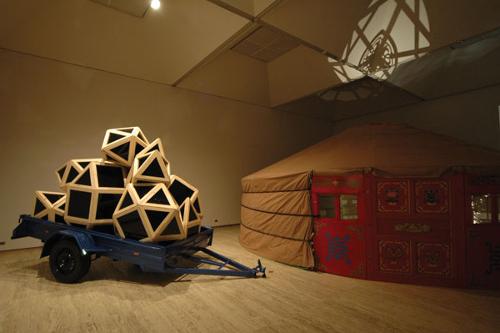
This is an important and enticing examination of how artists' interpretations of the Australian landscape were shaped by the classically educated eyes of 18th and 19th Century men. Further the author argues that this way of seeing in turn affected how the Australian landscape continues to be understood by many. Hoorn is very specific on what she means by 'pastoral'. She refers throughout the text to Virgil's 'Georgics', which was at the heart of European Classical education especially in Britain and Germany. This was the poem that celebrated the tranquil toil of rural life, the industry of the farm labourer, the shepherd tending his flock.
It is understandable that when looking for a way of encoding the wild and irrational Australian landscape, colonial painters chose Virgil to depict the tamed farmland. The search for pasture, for arable land, is tracked through John Lewin's magical series of watercolours on the crossing of the Blue Mountains and then through Joseph Lycett's infomercials for a scrubbed-up European vision. It is works like that these that present the dominant colonising narrative of Aboriginal people as minor picturesque background.
Later colonial works show European pastoral allegories of seasons. It is however a bit disconcerting seeing S. T. Gill's painting of a young man triumphantly holding a fox tail. This then is an account of cultural displacement with the land to the fore. The colonial vision presents the land with the rewards of work (mainly masculine) overcoming dormant nature. Visions of sheep mingle with images of Aboriginal cricketers, unhappily supplanted by later interpretations of the dominant English culture. The visual code adopted by these artists is more than the European imagery, it is also in the structure of the works and in the way they all refer back to the 'modern' translations of Virgil and the celebration of the industrious pastoral landscape. This tradition, as popular in Germany as it was within the rest of the European diaspora, was devalued in the 1930s after it was enthusiastically adopted by the Nazis.
Some of Hoorn's chapter headings provide a delicious commentary – I can't think of a better description of Von Guerard's paintings of the opulent rise of the squattocracy than 'An Embarrassment of Riches'. There is also a neat turn of phrase when she describes the later phase of the Landscape tradition when 'like all genres in decline, [it] entered its mannerist phase' with the works of Drysdale. Hoorn argues convincingly that the landscape tradition in this country has now been appropriated by a new generation of Indigenous artists, descendants of those from whom the land was stolen.
Hoorn falls into error when she links the later Australian incarnations of the orthodox pastoral tradition, the aesthetic conservatives of the 1920s and 30s to Hitler and fascism. She is not the first to do this. The modernists created Fascist links in their attacks both on the anti-modernists and on Robert Menzies. This debating device is in itself one of the reasons why the Australian pastoral tradition was for many years neglected by art historians. It is simply not true to link Hans Heysen's bucolic pastoral work to the art of Nazi artists and the suggestion that his friend Lionel Lindsay 'may indeed have introduced Heysen to the artists of National Socialist Germany' is absurd. Lionel Lindsay is on the record as being an anti-Fascist in Spain, the only country whose politics he studied in any detail. Curiously the other Australian lover of Spanish culture was another of Lindsay's close friends, the modernist critic, Basil Burdett, killed during World War II. I mention this as Hoorn describes him as the 'Sydney Morning Herald' art critic of the 1950s. The Herald's actual art critic of the 1950s was Paul Haefliger, who although he described himself as Swiss, was the refugee son of a senior Nazi official (executed at the end of the War). Art and life can be very confusing.
Despite these minor quibbles, 'Australian Pastoral' is, along with Ron Radford's Federation exhibition and the writing of the late Ian Burn, a major contribution to a reconsideration of the visual tradition that has above all others influenced how European Australians have interpreted the lie of the land.












